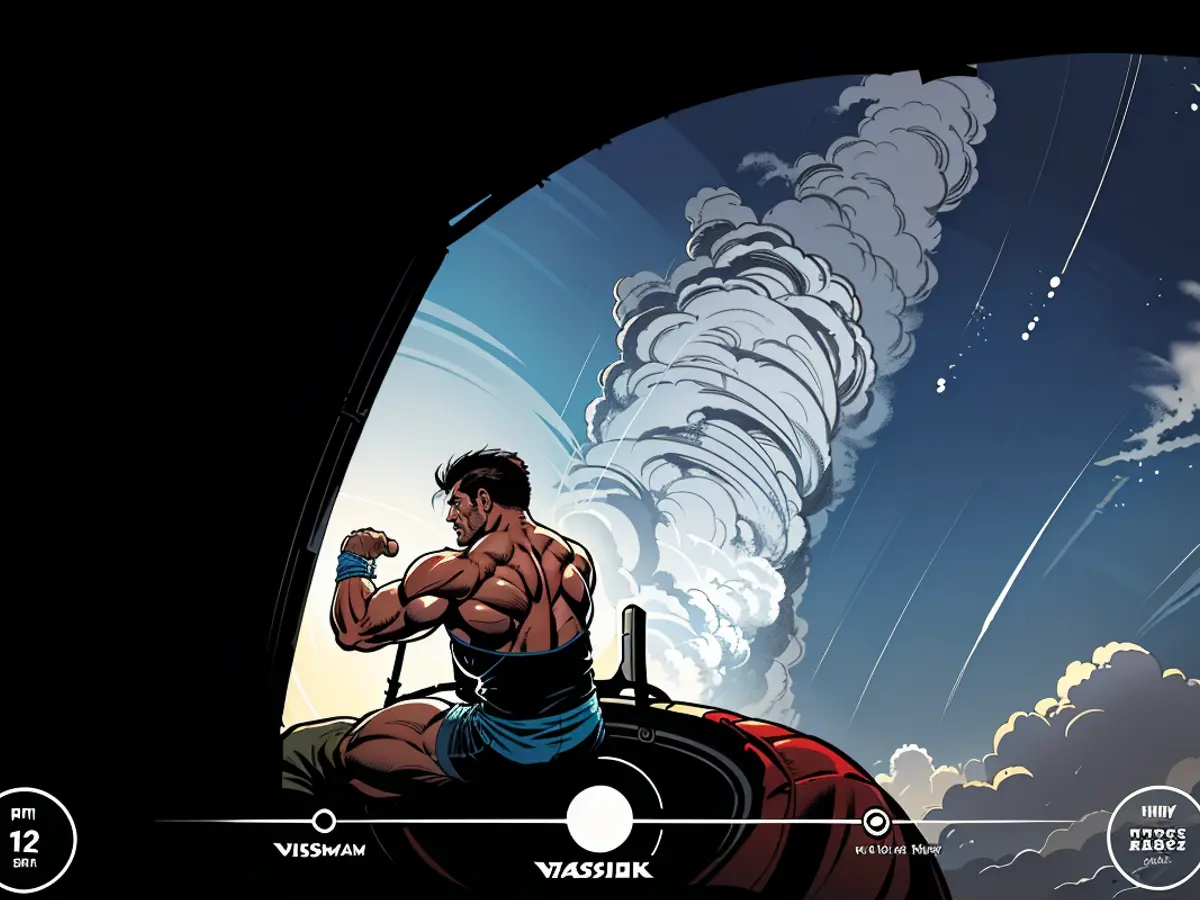Affluent American tycoon embarks on history's inaugural private spacewalk
The team of the "Polaris Dawn" private space mission ventured into their inaugural spacewalk, situated approximately 740 kilometers up in the sky. Live broadcasts from SpaceX depicted Jared Isaacman and Sarah Gillis adjacent to the Crew Dragon's hatch, briefly extending outside in their space attire. The hatch subsequently shut, and normal cabin pressure was resumed.
During this excursion, the functionality of the suit was assessed, and a wide range of data were gathered. The crew members stayed tethered to a sort of stairs at the Crew Dragon's entrance rather than drifting freely in space during this brief period.
The spacewalk itself was deemed the most perilous part of the entire mission, according to ex-astronaut Ulrich Walter. Originally slated to commence at 8:23 AM CEST, the precise cause of the delay remained undisclosed by SpaceX.
Why is the spacewalk so hazardous
One major difference is that the spacecraft doesn't come equipped with an airlock for exits, unlike space stations. This necessitates that all private astronauts suit up, as they too face exposure to the vacuum of space, with the cabin being devoid of breathable air.
Spacewalks are considered risky for a multitude of reasons. Given that "Polaris Dawn" had only recently launched on a Tuesday morning, the astronauts typically undergo prolonged preparations for such an excursion, allowing their bodies to acclimate to the conditions and minimize the potential for errors.
Laypeople as astronauts, billionaire as commander
Jared Isaacman, an entrepreneur, headed the mission for up to five days in concert with SpaceX founder Elon Musk, who remained grounded. Isaacman, along with SpaceX employee Sarah Gillis, were joined by former pilot Kidd Poteet and SpaceX employee Anna Menon aboard the Crew Dragon, launched into space via a Falcon-9 rocket from the Kennedy Space Center in Florida.
Expert spaceflight analyst Ulrich Walter highlights the novelty of "Polaris Dawn" in that none of the four aboard are traditional astronauts. "Isaacman has flown before, but he's essentially just a jet pilot like Kidd Poteet. The two women have no relevant experience.", Walter notes.
"I view this as a significant stride in space travel: The technology is now straightforward enough to operate without requiring traditionally trained astronauts." Walter explains. "There were also specially trained elevator operators – until the technology evolved to enable anyone to operate an elevator."
According to Walter, the purpose of the mission lies less in potential scientific breakthroughs and more in showcasing space tourism. "It's about granting individuals with no prior astronaut credentials the opportunity to travel in space," he explains. "The emphasis is on demonstrating that even those with no prior space exploration background can embark on such a journey."
Despite the lack of an airlock, the crew members were equipped with their space suits to protect them from the vacuum of space during the spacewalk. The danger of spacewalks stems from the fact that astronauts have to undergo rigorous preparations, even with no prior space travel experience, to minimize errors and acclimate their bodies to the conditions.







